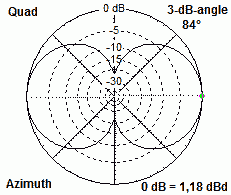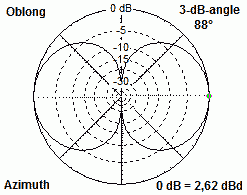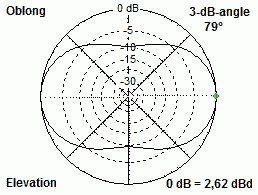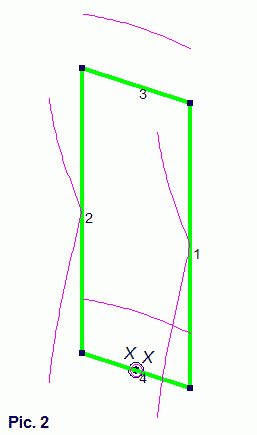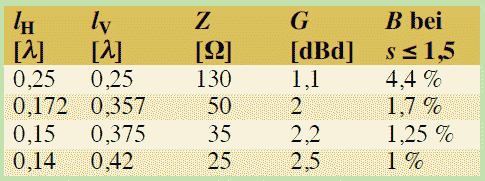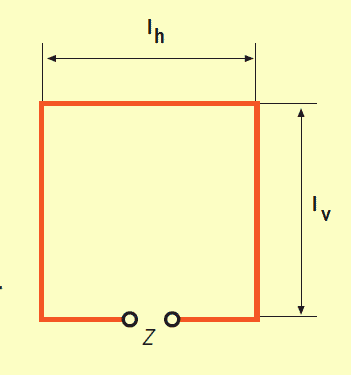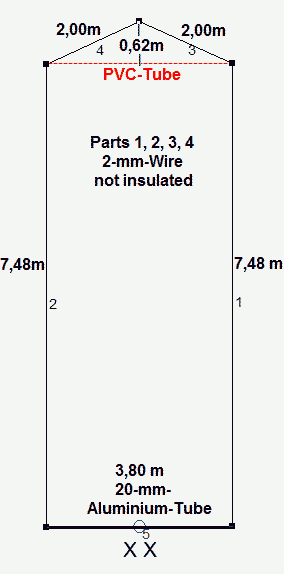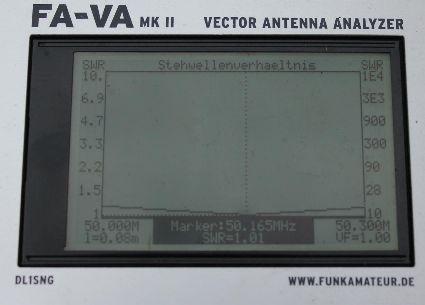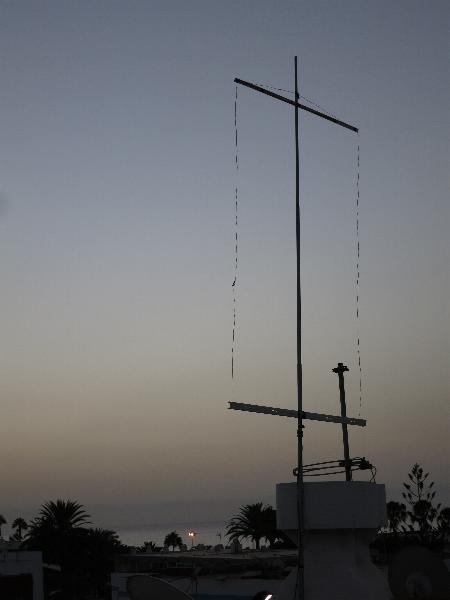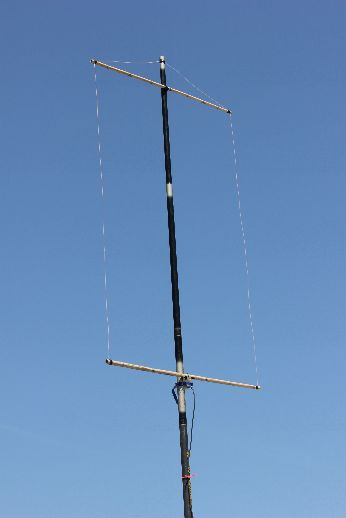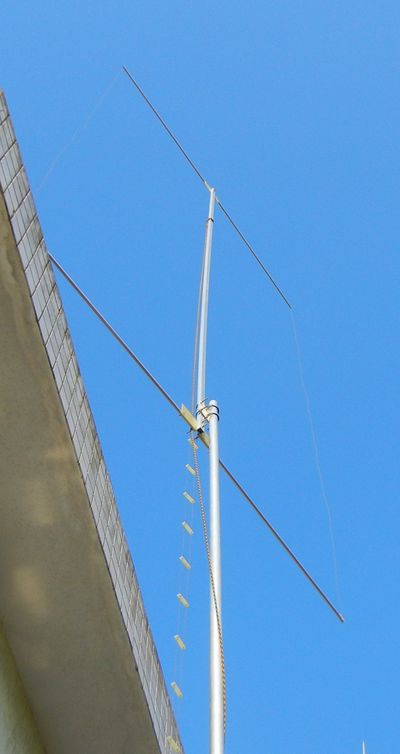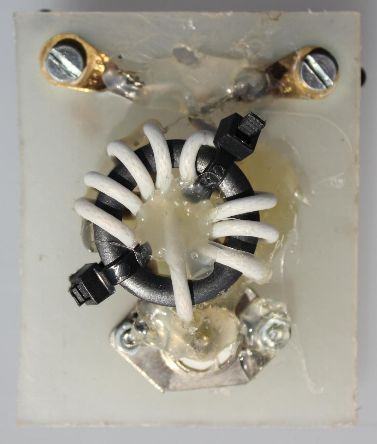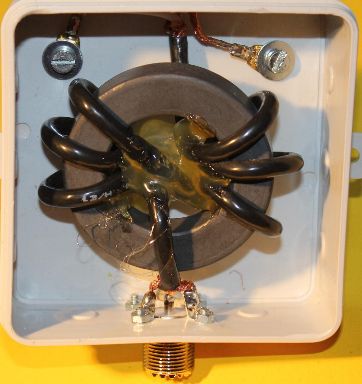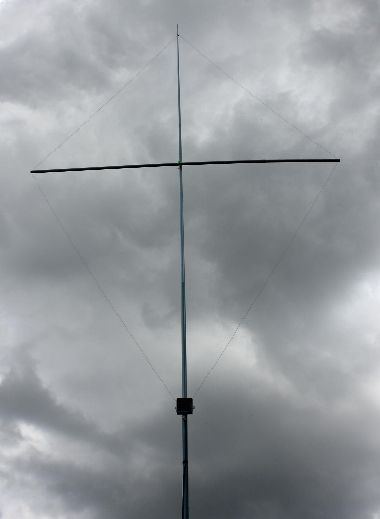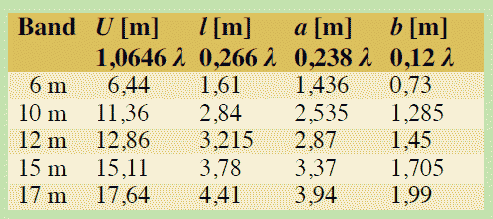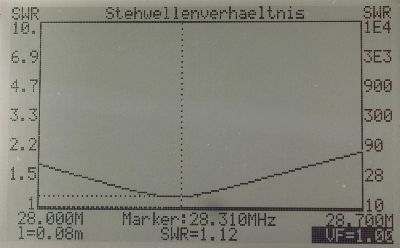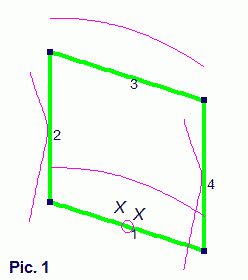 |
The Picture 1 left shows the classic
Quad-Element. The circumference is about 1 lambda, the side-lengths are
0,25 λ. For horizontal polarisation the Quad is fed in the part 1
or 3. The currents show maxima in this two parts. For the impedance and
the radiation patterns the two different Quads (Quad-shape and
Diamond-shape) show the same data!
The gain is 1,1-1,2 dBd and the feedpoint impedance 130 +/- j 0 Ω . The Quad is a stacked system, but for higher gain the two stacked parts 1 and 3 are to close together. But how we can increase the gain? Let as take a look on Picture 2 ! The distance between 3 and 4 increased from 0,25 to 0,4 λ. By comparing the patterns we see where the gain of 2,6 dBd is coming from. |
